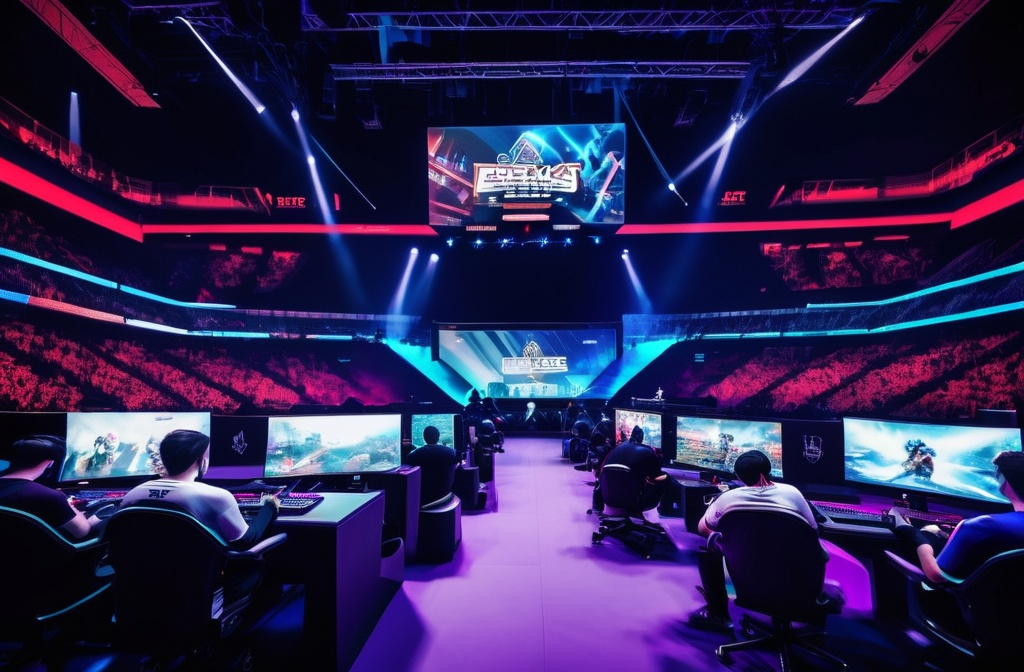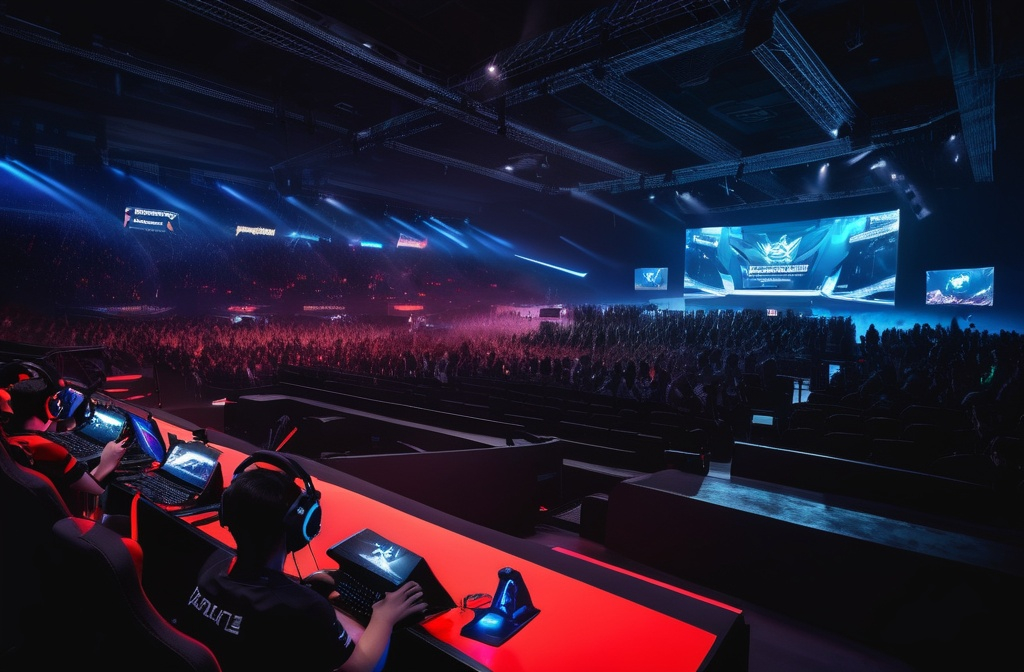I’ve watched esports evolve from small LAN parties to massive stadium events, and one of the most fascinating aspects is how player salaries have skyrocketed. Today’s professional gamers can earn millions through competitive play, sponsorships and streaming deals – a far cry from the modest tournament prizes of the past.
As someone who’s closely followed the industry’s growth, I’ve seen firsthand how top players in games like League of Legends, Dota 2, and CS:GO command salaries that rival traditional athletes. While entry-level pros might start at $50,000 annually, elite players can earn upwards of $500,000 per year before bonuses and other income streams. The rise of franchise leagues and major brand investments has transformed gaming from a hobby into a legitimate career path.

Key Takeaways
- Professional esports players earn between $50,000 to $500,000 base salary annually, with elite players making millions through multiple revenue streams
- Top-paying games include League of Legends (up to $2M), CS:GO ($1.5M), and Dota 2 ($1.2M), with significant regional variations in compensation structures
- Additional income sources include streaming revenue ($3-5 per subscriber), brand sponsorships ($5K-50K), and tournament prizes, which can substantially boost total earnings
- North American organizations offer the highest base salaries, typically 30% more than European counterparts, plus comprehensive benefits packages
- Player compensation is determined by individual performance metrics, team success, brand value, and social media influence (500,000+ followers)
- Future trends indicate growing cryptocurrency integration, AI-powered performance metrics, and standardized salary structures across regions
Esports Player Salary
Professional esports players earn compensation through three primary revenue streams: base salaries, tournament winnings, and content creation. I’ve analyzed current market data showing tier-1 organization players receiving base salaries ranging from $50,000 to $500,000 annually.
Esports Player Salary Variations by Game Title
| Game Title | Average Base Salary | Top Player Salary |
|---|---|---|
| League of Legends | $200,000 | $2,000,000 |
| CS:GO | $180,000 | $1,500,000 |
| Dota 2 | $150,000 | $1,200,000 |
| Valorant | $120,000 | $900,000 |
| Overwatch | $100,000 | $800,000 |
Regional Differences in Compensation
North American organizations lead the esports player salary standards with:
- Base salaries 30% higher than European counterparts
- Performance bonuses reaching $10,000 per tournament win
- Housing allowances averaging $2,000 monthly
- Health insurance coverage valued at $5,000 annually
Asian markets demonstrate unique compensation structures:
- Lower base salaries offset by higher tournament prize pools
- Revenue sharing from team merchandise sales
- Streaming contract requirements with regional platforms
- Performance-based incentives tied to regional rankings
Additional Income Sources
Top esports player salary supplement their base through:
- Personal brand sponsorships ranging from $5,000 to $50,000
- Streaming contracts with platforms like Twitch averaging $15,000 monthly
- YouTube content revenue sharing agreements
- Tournament prize pool distributions
- Merchandise revenue sharing
The esports salary landscape continues evolving with new game titles entering the competitive scene. Organizations now offer comprehensive compensation packages including performance bonuses, healthcare benefits, retirement plans, training facilities access.
Top-Paying Esports Games and Leagues
Based on my analysis of industry data, three major esports titles consistently offer the highest player compensation through a combination of base salaries and tournament winnings. These games dominate the competitive landscape with established league structures and substantial financial backing.
League of Legends Pro Salaries
League of Legends franchised leagues offer some of the most stable salaries in esports. LCS (North America) players earn average base salaries of $410,000, while LEC (Europe) professionals command $290,000 annually. Top performers in major regions like China’s LPL receive compensation packages exceeding $860,000, including performance bonuses. The World Championship prize pool adds $2.2 million to the earnings potential.

Counter-Strike: Global Offensive Earnings
CS:GO professionals generate income through a mix of organizational salaries and tournament winnings. Tier-1 teams provide base salaries ranging from $240,000 to $480,000 annually. The tournament circuit offers additional earning potential through:
- Major Championships: $1 million prize pools
- ESL Pro League: $850,000 per season
- BLAST Premier: $1.7 million annual circuit
- Regional leagues: $50,000-$150,000 per event
Dota 2 Prize Pools and Compensation
Dota 2 stands out for its crowdfunding model and massive tournament prizes. Key earning opportunities include:
| Tournament/Source | Prize Pool/Earnings |
|---|---|
| The International 2021 | $40.02 million |
| Team Salaries (Tier 1) | $180,000-$360,000 annually |
| Major Championships | $500,000 per event |
| DPC League Earnings | $280,000 per season |
Players on top organizations like PSG.LGD, Team Secret and OG earn base salaries plus a percentage of prize money, often reaching $1+ million in annual earnings for successful competitors.
Factors That Determine Player Compensation
Esports player compensation follows a complex evaluation matrix based on quantifiable metrics and market influence factors. I’ve identified three critical determinants that organizations use to establish player salaries and compensation packages.
Individual Performance and Statistics
Player performance metrics drive base salary negotiations in professional esports. Top-tier organizations track key performance indicators including kill-death ratio (1.5+ for elite players), average damage per round (85+ ADR in CS:GO), and win rates (55%+ in competitive matches). Tournament achievements, such as MVP awards or all-star selections, typically trigger performance bonuses ranging from $10,000 to $50,000. Players maintaining consistently high stats across multiple seasons command 30-40% higher base salaries compared to average performers.
Team Success and Brand Value
Organization revenue potential directly impacts player compensation structures. Teams participating in franchised leagues like the LCS ($10M+ franchise fee) offer 25% higher average salaries than non-franchised competitors. Championship-winning teams generate additional sponsorship revenue, enabling them to provide profit-sharing bonuses worth 5-15% of commercial earnings. Organizations with established merchandising operations (100,000+ annual unit sales) allocate 2-8% of product revenue to player compensation pools.
Social Media Following and Influence
Digital presence significantly affects a player’s market value. Esports professionals with large social media followings (500,000+ combined followers) secure supplemental sponsorship deals worth $5,000-$25,000 monthly. Content creation metrics, including average viewership (2,000+ concurrent viewers) and subscriber counts (100,000+ YouTube subscribers), lead to streaming contract bonuses. Players engaging regularly with fans through social platforms (3+ posts weekly) receive higher marketing incentives from team sponsors.
Additional Revenue Streams for Pro Players
Professional esports players access multiple income sources beyond their base salaries and tournament winnings to maximize their earning potential.
Streaming Income
Top esports players generate substantial revenue through live streaming platforms like Twitch and YouTube Gaming. Based on industry data, professional streamers earn $3-$5 per subscriber monthly, with popular players maintaining 10,000-50,000 subscribers. Platform-specific earnings include:
| Platform | Revenue Source | Average Monthly Income |
|---|---|---|
| Twitch | Subscriptions | $3,000 – $15,000 |
| Twitch | Donations | $1,000 – $5,000 |
| YouTube Gaming | Ad Revenue | $2,000 – $10,000 |
| YouTube Gaming | Super Chats | $500 – $3,000 |
Sponsorship Deals
Esports players secure individual sponsorship agreements separate from team obligations. Brand partnerships typically include:
- Equipment endorsements: Gaming peripherals manufacturers offer $5,000-$20,000 monthly for exclusive gear usage
- Energy drink sponsorships: Contracts range from $2,000-$10,000 monthly plus performance bonuses
- Apparel deals: Custom merchandise lines generate 10-20% revenue share from sales
- Tech partnerships: Gaming hardware companies provide $10,000-$30,000 quarterly for brand ambassador roles
- Betting platform promotions: Licensed operators offer $3,000-$8,000 per sponsored stream
Players with 500,000+ social media followers command premium rates, often securing deals 40% above standard market values.
Geographic Differences in Esports Salaries
Regional salary variations in esports reflect distinct market characteristics, infrastructure development, and competitive ecosystems. My research reveals significant disparities in compensation structures across major esports regions.
North American Market
North American organizations lead global esports salaries with standardized compensation packages. The average base salary for NA LCS players reaches $410,000, while tier-1 CS:GO professionals earn $25,000-$35,000 monthly. Top organizations provide comprehensive benefits including:
- Health insurance coverage for players and immediate family members
- Retirement plans with 401(k) matching up to 6%
- Housing allowances ranging from $2,000-$4,000 monthly
- Performance bonuses tied to tournament placements
- Revenue sharing from team merchandise sales
- LPL (League of Legends) star players earn base salaries of $860,000+
- Streaming contracts add $100,000-$500,000 annually for popular players
- Tournament winning bonuses reach 70% of prize pools
- Korean teams offer lower base salaries ($60,000-$120,000) with strict performance metrics
- Japanese organizations focus on content creation revenue sharing at 60-40 splits
| Region | Average Base Salary (USD) | Max Reported Salary (USD) |
|---|---|---|
| North America | $410,000 | $1,500,000 |
| China | $320,000 | $860,000 |
| Europe | $290,000 | $700,000 |
| South Korea | $90,000 | $450,000 |
| Southeast Asia | $60,000 | $250,000 |
Future Trends in Pro Gaming Compensation
The esports compensation landscape shows five emerging trends transforming player earnings in 2024 and beyond. Based on market analysis data from Newzoo and ESL Gaming, I’ve identified key developments reshaping professional gaming careers.
Cryptocurrency Integration
Blockchain technology integration creates new revenue opportunities for esports professionals. Teams like TSM FTX ($210 million deal) and FaZe Clan demonstrate how crypto partnerships boost player earnings through:
- Token-based performance bonuses tied to tournament results
- NFT revenue sharing from digital collectibles
- Smart contract payment systems for instant prize distribution
- Fan engagement tokens offering additional income streams
AI-Powered Performance Metrics
Advanced analytics platforms revolutionize salary negotiations by providing detailed performance data:
- Real-time tracking of 15+ gameplay metrics
- Predictive modeling for player value assessment
- Standardized evaluation frameworks across games
- Market value calculations based on comparative data
Global Salary Standardization
| Region | Current Avg. Salary | Projected 2025 Avg. |
|---|---|---|
| NA | $410,000 | $580,000 |
| EU | $290,000 | $450,000 |
| China | $860,000 | $920,000 |
| Korea | $185,000 | $340,000 |
Hybrid Revenue Models
The evolution of compensation structures combines multiple earning streams:
- Base salary + revenue sharing agreements
- Performance-based escalators
- Multi-game participation bonuses
- Content creation revenue percentages
- Intellectual property rights compensation
- $2.1 billion in esports investments (2023)
- 45% increase in average player salaries
- Expanded benefits packages including equity options
- Development league salary minimum requirements
- Retirement planning programs
Streaming Content Creation And Brand Partnerships
The esports industry has transformed into a lucrative career path that offers substantial financial opportunities for skilled players. I’ve witnessed firsthand how professional gaming has evolved from modest prize pools to comprehensive compensation packages worth millions.
Modern esports careers now extend far beyond tournament winnings with diverse revenue streams including streaming content creation and brand partnerships. The future looks even brighter with cryptocurrency integration AI-powered metrics and standardized salary structures reshaping player compensation.
For aspiring professional gamers the path to financial success is clearer than ever. With continued industry growth and investment I expect player salaries to keep rising making esports an increasingly attractive career choice for competitive gamers worldwide.




